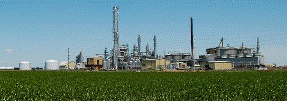Agricultural and Biological Systems Engineering, Department of

Adam Liska Papers
Document Type
Article
Date of this Version
2015
Citation
Published (as Chapter 10) in Bhardwaj AK, Zenone T, & Chen JK (eds.), 2015, Sustainable Biofuels: An Ecological Assessment of Future Energy. Walter De Gruyter & Co., Berlin. pp. 243-268.
Abstract
New environmental regulations in the USA and Europe require a reduction of greenhouse gas (GHG) emissions from transportation fuels as a component of climate change mitigation policy. The US Energy Independence and Security Act of 2007 (EISA) requires GHG emission reductions from the life cycles of biofuels compared to gasoline, by 20% for ethanol from maize grain (maize-ethanol), 60% for cellulosic ethanol, and 50% for other advanced biofuels. To determine these reductions, the US Environmental Protection Agency (EPA) employs life cycle assessment (LCA) methods which were not used previously in national environmental regulations. These regulations, entitled the “Renewable Fuel Standard 2” (RFS2), build on concurrent state efforts by the California Air Resources Board (CARB) under the Low Carbon Fuel Standard (LCFS). These regulations can affect billions of dollars in financial incentives and market access for the existing biofuel industry and they will determine how new feedstocks for biofuels are developed in the future.
Over roughly the last twenty years, LCA has been applied to biofuel production systems for determining GHG emissions and energy efficiency, but these evolving methods have been inconsistent [1–3]. These methods are used to estimate direct emissions from the life cycle from crop production to finished fuels, while also considering upstream emissions such as from fertilizer production. Contrary to these relatively simple analyses, the assessments currently developed under state and federal law are generally far more complex by including global modeling. The use of global models has been encouraged by findings that indirect effects from biofuel production, which are international in scope, lead to additional GHG emissions that were not previously recognized. Emissions related to indirect land use change (ILUC) from biofuel production are now quantified under RFS2 and LCFS legislation [4]. However, accounting for one indirect emission further necessitates the evaluation of other indirect changes in global emissions [5–6], which has led to the immense complexity now seen in federal LCA regulations.
Fundamentally, LCA integrates diverse data sources associated with an industrial process to: (i) quantify environmental impacts as continuous variables (e.g., GHG emission rates) and (ii) guide improvements in efficiency. The related field of risk assessment attempts to estimate the probability of discrete events that are not easily predicted, such as the timing of system failures [7]. In LCA, the most probable performance of a specific type of system operating in the recent past, currently, or in the recent future is estimated based on measurements of patterns and frequencies in industry (e.g., parameter values). By assembling a set of frequencies describing the system (although with incomplete information), LCA is based on a probability theory that states that the frequencies of future events will be approximated by past frequencies, given enough replicated observations under similar conditions [8].
The models employed in LCA are regulatory tools to archive knowledge, interpret and predict the links between industrial activities and outcomes of interest, communicate findings, and explore uncertainty and shortcomings in understanding [9].
Included in
Bioresource and Agricultural Engineering Commons, Environmental Engineering Commons, Operations Research, Systems Engineering and Industrial Engineering Commons


Comments
Copyright 2015 De Gruyter. Used by permission.